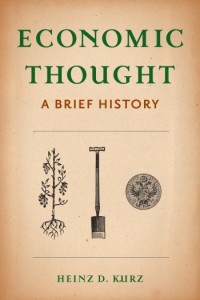Do you want to raise more taxes from rich people, dear Reader? I thought so. Then a read of [amazon_link id=”0691165459″ target=”_blank” ]Taxing the Rich: A History of Fiscal Fairness[/amazon_link] in the United States and Europe by Kenneth Scheve and David Stasavage is illuminating.
[amazon_image id=”0691165459″ link=”true” target=”_blank” size=”medium” ]Taxing the Rich: A History of Fiscal Fairness in the United States and Europe[/amazon_image]
Apart from anything else, the historical data on top tax rates is fascinating. There have really only been two big moves in top income (and inheritance) tax rates: up, a lot, from the 1920s to around 1950; down, by half of a lot, mainly in the 1980s but drifting down subsequently. It is also interesting to note the contrast between the US/UK top marginal rates and the rest of the developed world – about 40% vs about 60%. As in so many areas, the fact that data and economic research are heavily US-centric has a distorting effect on economic policy debates elsewhere. Extraordinarily, the burden of total taxation on the highest income bracket in the UK reached 90.7% during the second world war (compared to 19.1% for the bottom group). Talk about progressive.
The book discusses the forces driving the trends in taxation of the rich. The authors’ main point is that war has been the principal driver, with the sense of fairness the result of the calls the state made on citizens at those times. It was at times when the government demanded immense sacrifices from the majority of the population that the effective social contract ensured the wealthy paid: “War mobilization changed beliefs about tax fairness. It created an opportunity for new and compelling compensatory arguments that increased support for taxing the rich.” In other words, while the arguments for taxing the rich have always relied on fairness, the notion of fairness has changed at different times. The book demonstrates that as wars created opportunities for profit for capitalists, thanks to wartime production, the demand they should shoulder more of the tax burden gained great traction.
The book challenges the previous consensus that the consensus in favour of strongly redistributive taxation, to compensate for the sacrifice of ordinary people, lasted for any length of time after world war two. And to the extent there was, it anyway steadily crumbled. The book agrees that globalization, and a new emphasis on incentives for economic growth, played a part in reducing tax rates on the rich as the 20th century wore on. But they argue that a more important factor was the weakening of the kind of compenstory arguments that had been available in wartime. “Different compensatory arguments can be made today, but they have a smaller impact. In today’s debates about progressive taxation, observers often fail to appreciate this fact.”
The book reports a representative survey of over 2000 Americans showing that the top marginal tax rate they select is in fact below today’s rate of 39.6%. There appears to be little support from this for higher taxation. To put it another way, Americans don’t see why Silicon Valley should be taxed because Wall Street was bailed out – although they oppose the bailout. The lesson is: ‘fairness’ is not an abstract concept. You have to find a fairness argument with traction, and the compensatory arguments being used by the left today do not have that. Looking back to the 19th century, before the era of global war provided a strong compensatory argument, the principles that enabled increases in taxes on the rich concerned equal treatment for all within the tax system: as existing taxes were raised on land, new mercantile fortunes were untaxed. So taxation was extended in its coverage. The authors suggest looking to the thickets of exemptions and special privileges rather than the headline-grabbing top marginal rates. Interestingly, this is something Jo Maugham emphasised this week. Maybe he had read this very interesting book. David Stasavage also spoke at this recent LSE Conference on inequality.

